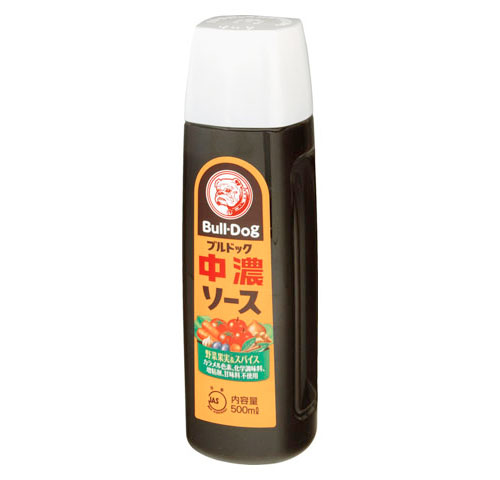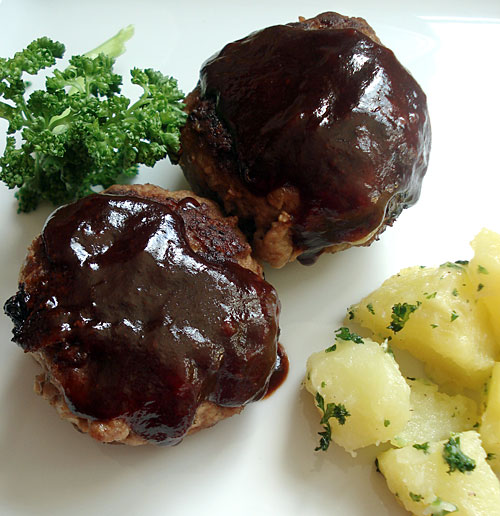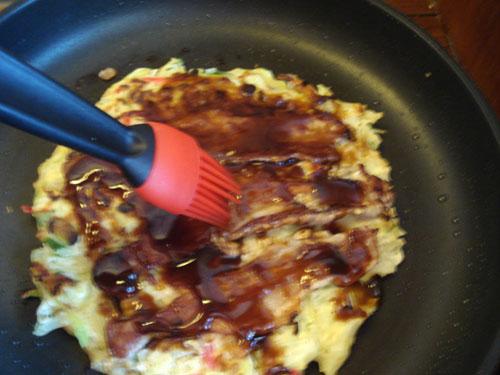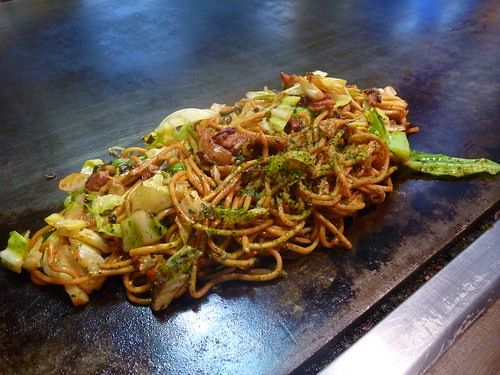The Mystery of Japanese "Sauce"

Miso, soy sauce, bonito flakes...these are the kinds of ingredients you'd expect to be used in Japanese recipes. But there's another ingredient that appears very often, and it's usually just called "sauce" or so-su (ソース). What is this "sauce" anyway?
This is the most popular brand of Japanese "sauce", although there are several other makers. It features a picture of a Bulldog. Some people call all "sauce" Bull-Dog sauce.

On the English version of the Cookpad site, it was decided early on to call it "Japanese Worcestershire-style sauce". It does indeed taste like that classic English sauce made with mystery ingredients including anchovies, but it's a lot thicker, sweeter, browner. "Sauce" appears on all kinds of foods, from Japanese hamburgers (which are more like 'hamburger steaks' rather than American burgers)...

...to okonomiyaki...

...and a lot more. Besides being used as, well, a sauce, it's also used to add flavor to stews and soups, in marinades, and a lot more.
So what is this "sauce" anyway? While there are variations, called tonkatsu sauce (used on tonkatsu or breaded deep fried pork cutlets); chuunou sauce (pictured above) which just means 'medium-thick' sauce, usta- sauce, which is the Japanified version of Worcestershire (but usta- sauce is nothing like original Worcestershire sauce); okonomiyaki sauce, and so on. There's little difference between them though, except in the degree of sweetness, and a slight difference in fruitiness and viscosity. Most "sauces" list "vegetables, fruit and spices" as their ingredients, plus amino acids (umami), sweeteners, caramel coloring and other things depending on the type.
"Sauce" apparently made its debut in the late 19th century in Japan, when it was sold as a different kind of soy sauce. This didn't work out well, since it tasted so different from well, real soy sauce. "Sauce" really only took off in the post-World War II era, along with the rapid growth in popularity of westernized or yohshoku (yoshoku) cooking, which had previously been limited to the big cities.
While it's still associated with yoshoku, as its use on things like okonomiyaki and takoyaki shows it's now used as a flavoring ingredient for all kinds of cooking. For example the Japanese version of stir fried noodles, yakisoba, is flavored with "sauce", unlike the Chinese version (lo mein) which is flavored with a soy sauce base.
So do you need "sauce" in your Japanese cooking pantry?
Well..it all depends on how much it costs for you. If you live near a Japanese, Korean or general-Asian grocery store, and it's fairly inexpensive, then by all means have a bottle around. You can use any brand you like, although Bull-Dog brand is quite reliable. (Bull-Dog sauce apparently used to be called "Inu-jirushi So-su", which means "Dog Brand Sauce". I think the name change was a good idea...)
"Sauce" can be used for things other than Japanese food - on all kinds of meaty or deep fried dishes, in stir fries, and so on.
As I mentioned above, I don't think there's a big enough difference between the "sauce" types to require stocking up on all of them, unless you want to of course or can spare the cash and space. Okonomiyaki sauce is sweeter and thinner than chuuno sauce for example, but there's not a big difference. See below for ideas for doctoring any kind of "sauce". For what it's worth, right now I have one bottle of chuuno sauce in my fridge.
Reasonable substitutes for "sauce"
If you don't have a Japanese/Asian grocery store near you, you can substitute other brown sauces. Traditional British Worcestershire sauce (such as the one from Lea and Perrins) is a great sauce and flavoring ingredient to have around anyway, but it's not really a good substitute for Japanese "sauce".
For that purpose I have at various times used A-1 Steak Sauce in the U.S., and HP Sauce in Europe. (Here in France, the latter is sold in our local supermarché in the "ethnic" food section.)
Both are a lot tangier than Japanese "sauce" though, so you need to temper it a bit. Adding sugar works, but molasses or golden syrup may work better. You can try adding some grated apple (a sweet variety, not a sour cooking variety) too. For okonomiyaki, you may need to add sugar or other sweetener in a 1:2 ratio of sweetener to sauce to come close to commercial okonomiyaku sauce. Or, if you like your okonomiyaki with mayonnaise too, add a bit more mayo to neutralize the sauce's tanginess. Of course if you like tangy sauce anyway, you can just use one of those sauces straight.
I have seen a few recipes suggesting oyster sauce as a "sauce" substitute, but to me the flavor profile is quite different, so I recommend one of those sauces mentioned above instead.
[By the way, I'm boosting up my 'Japanese ingredients explained' section. If you need a Japanese ingredient explained in detail, and you can't find an explaination here yet, just let me know and I'll see what I can do.]
Filed under: japanese ingredients yohshoku